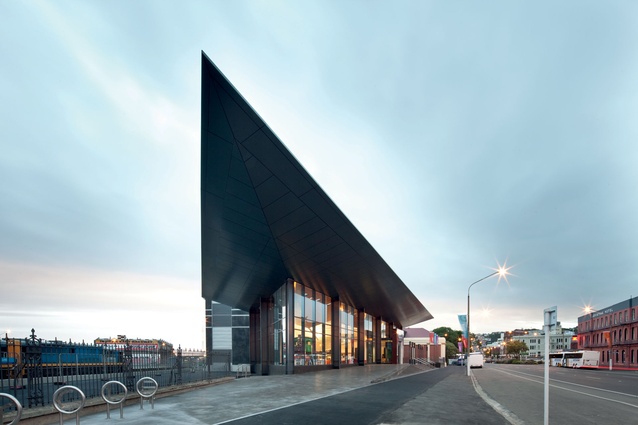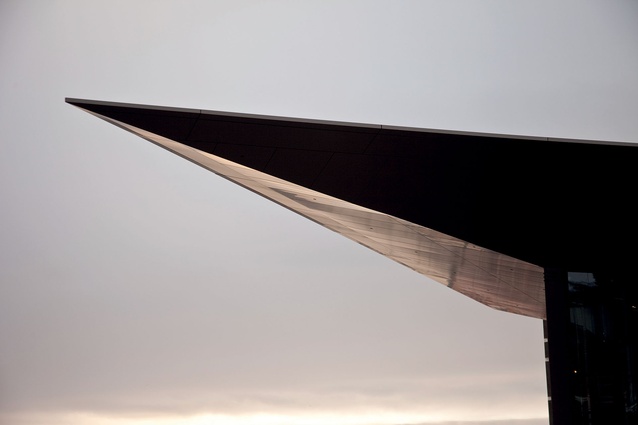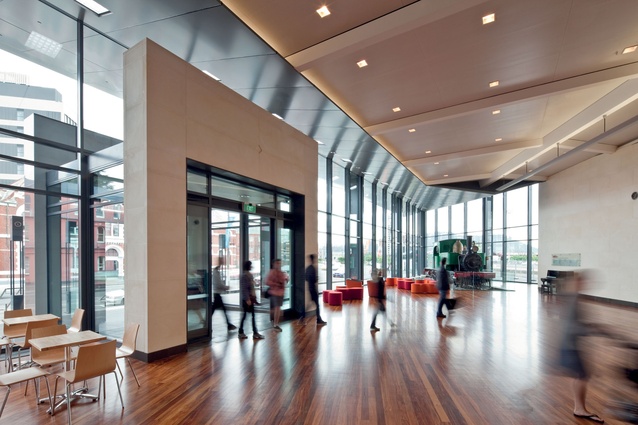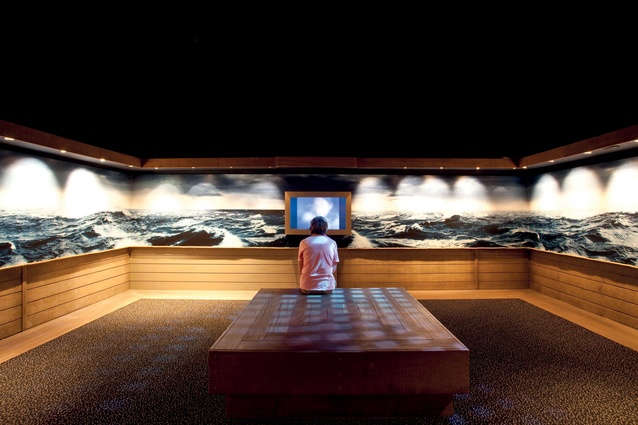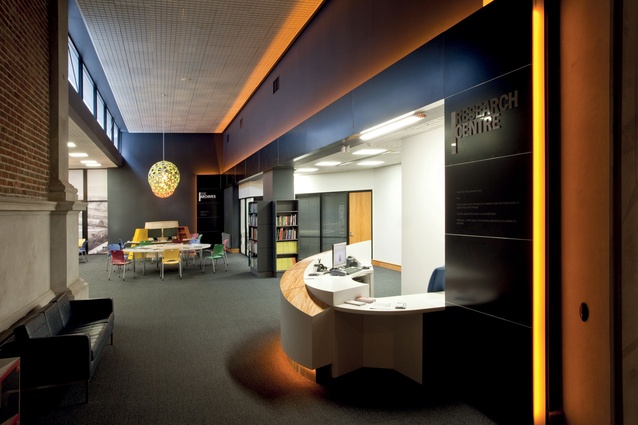Toitū Otago Settler’s Museum
‘Toitū he kaika, whatungarongaro he tangata’ – ‘The kaika remains, even if men must disappear’ – is a Mãori proverb suitably attributed to the toitu river, which flows into Dunedin’s harbour, and also to one of its neighbouring inhabitants, the Toitū Otago Settlers Museum. This proverb is a lovely dedication: a reminder about the transience of human life, the endurance of nature and, also, to a lesser degree, to the endurance of the built world.

Toitū is New Zealand’s oldest history museum and, as the proverb suggests, its makers have long since disappeared but, luckily for us, the institution lives on to tell the stories of the early people of Dunedin and its surrounds. The Otago Early Settlers’ Association originally founded a museum on this site, opening in 1908, which, at the time, was the 60th anniversary of the founding of Dunedin. It began by telling the stories of the early European settlers – who arrived between 1848 and the first Otago gold rushes in 1861 – but, later on, its scope included earlier European visitors and settlers, later colonial arrivals, as well as Mãori history.
Architecturally, Toitū is a colourful melting pot of architectural styles – four buildings from different eras colliding in unison into a vast 10,619m2 museum. One building is a 1930s art-deco-style bus garage, another is the original brick museum, a new 3,000m2 international-standard collections storage facility, and the brand new addition is an entrance foyer/reception/shop and function space.
When the Settlers’ Association ran out of money to oversee the museum, it talked the city council into taking over payment of repairs and maintenance to the building, while it managed it, and Robert Tongue was tasked to manage the process. Tongue led the design of the project in collaboration with Nick Baker from Baker Garden Architects. (Recently retired, Tongue was, as far as I’m aware, the last remaining City Architect in New Zealand, unless we appoint some more, of course).
“Toitū is a whole jumble of buildings,” described Tongue. “I was educated about the dangers of museum maze, so we have carved an axis right through all of the buildings to link it up. Of course, the exhibitions block it up now… but it works. It was incredibly complicated.” Apart from the obvious complexity of the plan – coherently drawing four different buildings together – and the inherent challenges of a public museum brief, the architects’ task was exacerbated, perhaps, by the fact that they had to work with four different museum directors during the project’s four-stage, five-and-a-half-year-long development, resulting in many iterations.
This is also a difficult site. Train tracks run behind the buildings on the harbourside, while, on the other side, the controversial one-way motorway system along Queens Gardens effectively creates a disconnect between the museum and the central city. The museum is a beacon, though, with its dramatic arrowhead roof that shoots out in astronautical fashion.
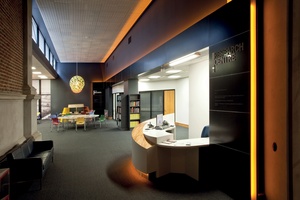
Underneath is the main entrance foyer – a vast and impressive space with a stud height that rises from 6m at the flat ceiling to 6.9m at the glazed front of the building. Josephine, an E-class Fairlie steam locomotive is nestled into the sharp point of the geometry and is a popular attraction, being the oldest preserved steam locomotive in New Zealand, built in 1872, while the youngest steam locomotive, a JA1274 from 1956, has her own housing shed outside beside the car park and the railway line.
However, the new interior fit-out makes the sheer volume of this space a bit sparse: the shop and café appear lost and lacks some of the comfort factor you would expect in a modern museum. It might be more inviting for visitors to enter into an enclosed shop that encourages perusal of the wares, without prying eyes potentially watching from anywhere in the lobby. And, without crowds of visitors or a function to liven up this huge space, it could benefit from a large-scale sculpture or an object or another heritage train that doubles as a café or exhibition space.
Moving through into the oldest part of Toitū, original and reclaimed timber floors pull the scheme together and unusually for a museum, which requires very precise light levels for preservation, an original glass ceiling (which was, sadly, covered over for much of its recent life) now draws subtle natural light into the space at an exacting level. Here, you are given a spring in your step; the space was built in the early 1900s as a sprung dance floor for the young men and women of Presbyterian society to meet over cups of tea and, as Tongue describes, some “surreptitious glasses of whiskey” on a Saturday night, overlooked by suspicious parents.
The adjacent ancestors’ room is an absolute gem. Hung in the Victorian style (the walls covered with picture frames nudging one another), paintings of the early Otago settlers’ faces look down upon visitors. (It is reminiscent of the Shirley Sherwood Botanical Art Gallery at London’s Kew Gardens). This space is slightly unsettling and spooky but, architecturally, very impressive: with its backdrop of magenta walls contrasting against the white-painted exposed structure of the ceiling and the timber floor. A museum in America offered to buy the entire room outright for a song but was, quite rightly, turned down.
The art-deco bus ticket hall is another treasure, with clerestory windows drawing light into the middle of the building, offering an architectural window into the past, both literally and metaphorically. The ticket booths and tobacconist’s shop are now occupied by LED TV screens with actors in period costume talking directly at you.
The old bus station hall was a controversial addition to the scheme, suggests Tongue: “I managed to convince people that the bus station building is actually a nice building because nobody believed that and I talked the council into agreeing to let the Settler’s Museum buy it… I think it cost a dollar.” Its main feature is a wonderful saw-toothed roof structure.
Toitū is a spearhead project for the city of Dunedin, which has been intent on a holistic approach to earthquake strengthening its heritage building stock and is now committed to redeveloping the nearby warehouse precinct into an exciting arts and cultural precinct (more on that in a later edition). Nick Baker explains that “people go from the Octogon down to the railway station but, as Toitū has taken off, more people have been coming down here and then linking up with the neighbouring Chinese garden, the warehouse precinct, the Queens Gardens and then back up through the exchange”.
This is certainly one of the country’s loveliest museums: it tells an interesting story about the southern region of New Zealand, not just in its exhibition displays – which provide a less-is-more approach that hones one’s focus in and onto the objects – but also in its architectural history. A cash injection could improve the interior fitout of the foyer and, if at all possible, resolve Toitū’s disconnection with the central city, enabling the design to fully shine.

